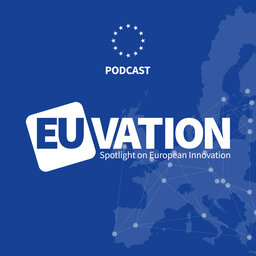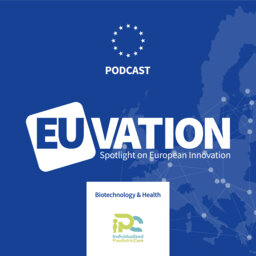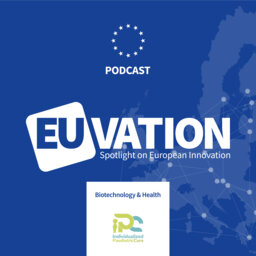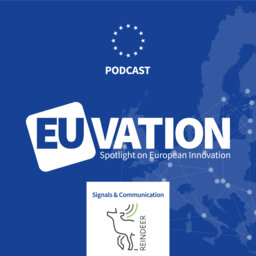Car2TERA (1) H2020 Project: The Sub-Terahertz Frequency in Car Automation
In our podcast we speak with Joachim Oberhammer, scientific lead of the Car2TERA project, about goals, expectations, challenges, results and the kick-off meeting.
The Car2TERA project has received funding from the European Union’s Horizon 2020 research and innovation programme under grant agreement number 824962.
Powerful collaborations, cutting edge science and curious minds coming together for a glimpse of the future. Stay tuned as we look at the latest updates on some of the most promising technology projects.
In this episode we look at the Car2TERA Project . This is a new effort to push the automated vehicle a little closer to reality through the use of advanced radar. But what's needed before we can actually let go of the steering wheel?
Hello and welcome. I'm Peter Balint. And today we are in the technikon studios speaking with Joachim Oberhammer. He's the scientific lead for a new project called Car2TERA which looks at using subterahertz frequencies for self-driving vehicles. Welcome to our studio.
Thank you very much.
And the first question I have for you is can you give us just the overview of this project Car2TERA?
So this is a recently started European project so it's funded by the European Commission and it involves several countries in Europe and the main focus of this is to utilize state of the art terahertz technology so that's an electronic technology which is utilizing the terahertz frequency spectrum which is 100 times higher frequencies than mobile phones for instance and we want to utilize this frequency spectrum with recent technology to create a new car radar sensor which is for passenger safety in the cabin of the car —so monitoring their passengers the pre crash and post crash scenarios. And a secondary track in this project is also on creating new high frequency technology for wired communication links. And this is mainly in base stations for mobile phones and where there is currently a bottlenecks in how to interconnect these base stations. And that technology should be able to boost and 5G and beyond 5G telecommunication systems.
You mentioned radar systems and you say you're looking at developing radar systems and I'm thinking Okay My car has a radar when somebody is in my blind spot it tells me is today's technology just not good enough or does it need something different?
So that different types of radars which are used in cars nowadays. And as you mentioned you have the forward looking radar which is for for crash or detecting obstacles in front of the car and on the other side what's in the corner radars. And this is a completely new radar sensor application in a car scenario. So this doesn't exist at the moment. There are no comparable radar sensors yet so this to be a radar which is inside the car monitoring the positions and the behavior of different parts of the bodies of the passengers mainly in in a crash scenario of the car. And currently for this application there's cameras being used but cameras totally fail because in a crash scenario you have within milliseconds you have to take decisions to the car to take decisions which kind of airbag to inflate. And cameras are too slow for that. And also cameras don't have the necessary contrast like if there's strong sunlight or if it's very dark. So right now automotive car manufacturers are looking for alternative sensors here and here a high resolution radar could be a solution. And that's the reason why there is interest in using a new radar sensor which is operating at a much much higher frequencies than conventional car radars because of much much higher frequencies you have much higher resolution to resolve the situation inside a car.
So this is for improving situational awareness of what happens in the car and then to take measures for minimizing the injuries to passengers in the cabin.
So it's safe to say that these radars, these cabin monitors they look to see what's happening and if there's an airbag requirement it looks to see which airbag to deploy first and then create a sequence?
Yes like for instance if the if the the car knows how the head is moving you in the crash. Depending on that that the sequence of inflating different airbags because it can be a sequence of airbags not on a single one that the sequence of airbag can be can be controlled by knowing how different body parts are moving. And this is even more important in future scenarios like when you think about autonomous driving because then that the passengers will sit in the car not being attentive to what happens. Right now the driver is very attentive and sees what happens. But in the future people might be almost like lying around in the car or reading books. So. So then it's very important for the for the car to know where are the passengers what are they doing. How are their body parts moving. If a crash scenario happens
OK. And what is it about the terahertz frequency that makes it especially suitable for this application?
So conventional radars in particular car radars have quite a low resolution like it's even centimeters or worse that centimeters centimeters resolution and that's enough to look whether another car is in front of you what 100 meter distance so it's also enough to detect where a car is approaching from the side. It could be a side crash. So it's good for external radars but for internal in-cabin monitoring you need much higher resolution because you want to be able to distinguish —you want to see the head for instance and want to detect whether how the different limbs are moving of the body. So you need much higher resolution and for that in principle you have to go to higher frequencies to get higher resolution and in the future this could be even thought of detecting like the directions in which the passengers are looking for instance and for that you need very very high resolution radar.
And with this high resolution terahertz wave what other uses do you have for this?
Well currently terahertz technology is mainly used for for like radio astronomy applications. It's used for environmental sensing like there there are are sub terahertz sensors in satellites who are monitoring clouds and and ice developing in clouds. So this is for weather surveillance also for pollution monitoring so for measuring air quality so terahertz technology is used for that. There's also medical applications for terahertz technology. And there is also telecommunications very interested in going to terahertz technology because you have a very very large bandwidth so you can have huge data rates going over terahertz frequencies . So there's a lot of applications which really really would need this frequency spectrum but technology is not mature enough so that's a key point in this project. We are developing next generation terahertz technology and using also industrial grades electronics for that. So it's not only it's not only a research focus itself but we are trying to use industrial grade processes for that that can really be a quick commercialization of of utilizing this technology.
So in this project the Car2TERA project, are you making anything, are you designing something, are you making a prototype of something?
Yes we are making two different prototypes in this project and the one will be this car radar sensor so this in cabin car radars sensor that we are prototype and whenever we developed together with an automotive system supplier which is Veoneer . And that's one that and then the primary prototype and there is the secondary prototype and that is together with Ericsson and that is about about routing terahertz signals over plastic wires that's similar to glass fibre network which people might have at home nowadays but it has very large bandwidth and it's low cost also and is much more robust because the glass fibre connections are very prone to have problems with dust particles for instance. So there's a very big reliability issues and it's a terahertz all but plastic fibres might solve a lot of problems and make the interconnections in base stations a much more cost efficient and also more reliable.
How would you position this project technologically worldwide?
So basically there are different aspects and different technology building blocks which are putting together this project and some of them are very very cutting edge technology. So like we are using a silicon micro machined platform technology for that and there is only a few players in the world can do that at the moment. And then another interesting aspect here is that we are trying to use silicon germanium semiconductor technology in that project. And here we actually are using industrial grade semiconductors. So and that is actually quite challenging to do utilize this industrial grade technology at these very high frequencies. So for that point of view I think this might even be the first project attempting to do that. And so there are several aspects which are really worldwide giving new directions.
You had a kickoff meeting today to start this project. How do you feel about that?
Yeah it was very interesting to meet all the partners and to see the motivation in the eyes of all the people. So that was very nice. So this was a very good consortium and people seemed to be very eager and engaged in the project. And of course we also discussed technical issues. So there's a couple of critical points in the project which might fail which need special attention and these points were discussed and about there were actions taken for how do we tackle the project and how do we get started in a very smooth and efficient way
What does success look like in this project?
Well success here would mean that the industrial and users in the project and that's Veoneer the automotive systems supplier and also Ericsson the telecommunication systems supplier. If they would in the end of the project be happy with the prototype and utilize them in their next next generation products for instance and see OK this technology which we want to use which makes sense for us and we can go on to industrialize that. I think that would be the main success in the project. Of course for us I'm from an academic environment of course we are looking forward to doing very interesting publications and which will get very high impact in the scientific community.
Okay. Now I read quite a bit about technical readiness levels in the project summary. Can you tell us what that means.
Yes. So this is a scale basically on which different technology levels like from very very basic research to over prototypes like proof of concept prototypes and industrial demonstrators and finally towards products. So how do how where do you place the state of development in certain technology. And this project is characterized or classified as TRL so technology readiness level 4, which is kind of quite high actually for this type of project I would say. So it is clearly a bit more than just a proof of concept.
And so it is going a bit closer towards the industrially usable prototypes. So it's also this radar sense that actually is intended to be used in our mock up cabin in a car cabin not the car safety equipment manufacturer . So it is a bit more than just a university laboratory demonstrator. And it's really, it's very challenging of course here. But I hope we can manage that.
I know you're not from the automotive industry but based on what you know and your experience working in this field a little bit, where do you see cars in 10 or 15 years?
Well cars will take over more and more functions from the driver. So we already have now a lot of car assistance function. And that can be our brake assistance or stop and go assistant and it can even be electronics stabilization program. So the car is kind of guiding the drive are more and more and this path will clearly continue in the future. So the final goal is of course complete autonomous driving which might be very far in the future not only for technological reasons but also for for liabilities or for legal reasons. So there are several reasons why this autonomous driving is not that easy to implement. So, there's a long road towards that but clearly along that way there will be more and more functions which the car can take over or assist the driver and also take more and more responsibilities from the driver to safeguard the driver mainly and to also of course to make driving as a more pleasant experience.
Now you also just finished up a project not so long ago called M3TERA which also again looked at utilizing sub terahertz frequencies. Is there anything from M3TERA that you were able to exploit or that you will exploit? Can you bring over lessons learned from M3TERA to Car2TERA .
Yes so that they can very clearly and basically M3TERA was a project which was utilizing also a miro machined technology platform which is also the key at the center of this Car2TERA project. We were at slightly lower frequencies which made it easier and also the the demonstrator was at a low technology readiness level. And so basically that the Car2TERA project is more ambitious both when it comes to frequencies, when it comes to the readiness level. So it comes close to actually industrial demonstrator and and also the complexity of the system itself. So basically I would say if we would not have had theM3TERA project before, it will be very very difficult to do go into this Car2TERA project. And the other thing is also we learned not only technology M3TERA but we also learned how to manage these complex projects because there's a lot of different technologies which have to be combined and people are speaking different languages there are different interfaces which were not clearly defined from the beginning. So there was a lot of technical management issues in M3TERA —a lot of things which we forgot when we wrote the project plan or we were not aware of critical points. A lot of risks which we did not estimate to that level before. And with that of course we go with a completely different understanding both from a technology point of view and from a management point of view into this new project
And I think it was you that said one of the biggest challenges was managing expectations in industry and managing expectations in academia that these are two different two different playing fields if you will. And perhaps a challenge in moving a project forward.
Yeah there is... there can be of course a clash of interest here between academics and industry. Though actually I never experienced that in this project. And not in M3TERA nor, I don't expect it in Car2TERA either. So that's actually nice with this consortium that really everyone in this consortium is kind of playing rowing the same boat towards towards same common goal. People are really working together on the same on the common goals. So I definitely don't see a clash of interests between academic or industrial partners or between different industrial partners in the project.
Can you tell us briefly a little bit about your partners in this in this project?
So there are several other partners involved in the project and then we have got several large scale companies and that's Veoneer from Sweden is a large one of the world's largest automotive safety equipment providers. So that's the end user for this car radar application. Then we have also Ericsson involved —Ericsson as one of the world's three largest telecommunication systems and service providers. And this is secondary and user on this project. We also have Infineon involved so Infineon is one of the largest semiconductor manufacturers and also micro machining so for micro mechanical systems manufacturer in the world.
So these are the three big companies and they are augmented by smaller companies by SME's. And here we have Anteral, it's a company in Spain who is focusing on on antenna design and we have ENT in Poland who is providing Graphene materials so there's a new type of material for for this project. And we have Technikon in Austria who is the co-ordinator of this project is a professional and product management company which is needed nowadays to run this kind of projects and then we have academic partners providing the state of the art technology and that's a Chalmers in Sweden doing the integrated circuit designs and KTH in Stockholm, also Sweden from where I am from who is providing these micro machine integration platform for this project.
And tell us your background. What's your day to day work like.
What I'm Professor in microwave and terahertz Microsystems KTH Royal Institute of Technology in Stockholm Sweden. And yeah we are working in frequency ranges nowadays from 100 gigahertz to 1 terahertz for different applications. Telecommunication radar applications are also also radio astronomy applications some medical applications like we have done as skin cancer sensor based on Terahertz technology some time ago. So we are trying to exploit new applications in the sub terahertz frequency spectrum by using micro machining technology.
Is there anything else you can add.
Not really. So I think I'm looking forward to have a very interesting project with interesting results and satisfied partners in particular the industrial end users and I of course would like to acknowledge that the funding which we receive from the European Commission for this project. So I'd say it's actually very great research funding infrastructure in Europe available which makes it possible to tackle these big technological challenges and it's several million euros which are used in this project to develop this new technology. And so we would like to acknowledge that and I hope we can make the best out of out of that taxpayers money into the tax payers putting trust in us basically by giving us this money and I hope we can make the best out of it.
How long is this project.
The project is scheduled for thirty nine months and that's a bit more than three years. Typically a project of this scale is scheduled for three years and we already from the beginning asked for slightly longer time because there are a lot of technical details which need to need to be timed properly and it could take some time. And so we hope to complete this in three years and three months.
Thank you for speaking with us today and thank you also for your contributions to this project and we wish you much success for the project and for your team and we'll talk to you again in a few months to see how you're doing.
Thank you very much.
This podcast has been brought to you by Technikon. The CAR2TERA project has received funding from the European Union's Horizon 2020 research and innovation program under grant agreement number 8 2 4 9 6 2.
 EUVATION: Spotlight on European Innovation
EUVATION: Spotlight on European Innovation


